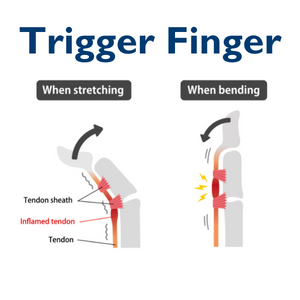If you're reading this on your smartphone, let's take a moment to check in with your 'phone form'. Are you supporting the weight of your phone with your pinky bent in and locked? Have you ever wondered if this form was creating issues for your hand health?
.png)
As new versions of smartphones continue to increase in size, similarly the number of questions we get about 'smartphone pinky' also increases in number. You may have noticed that the long-term support of your iPhone with your pinky may have created an indentation in the skin, but we are here to myth bust some information shared on the internet about this musculoskeletal 'phenomenon'.
For this article, we sourced information from two of our Hand specialists - occupational therapist April Hibbeler, and hand surgeon Dr. Michael Geary.
The long and short of it: 'Smartphone or Tech pinky' is not an official diagnosis, confirmed by both April and Dr. Geary. However, that is not to say that supporting your phone for long periods of time cannot cause harm to your small finger, hand, or upper arm.
Let's dive in.
What is 'Smartphone Pinky"?
“Smartphone pinky” refers to the way that some people support the base of their smartphone with the inner border of the small finger (pinky), with the remaining fingers supporting the back of the phone and thumb positioned to interact with the screen.
Can how I hold or use my phone cause injury?
While there is not a specific diagnosis with the term “smartphone pinky”, there are several other common hand and upper extremity problems that can be exacerbated by certain postures and positions during cell phone use:
- Exacerbation of underlying trigger finger
- Carpal tunnel syndrome
- Cubital tunnel syndrome
- Finger cramping and maybe some joint deviation if you have arthritis.
Exacerbation of underlying Trigger Finger

Probably the most common hand problem that can be made worse by this position is trigger finger of the small finger. Since the small finger is flexed down to support the phone, this position can cause the small finger to get “stuck” or “locked” in a flexed position in someone who has an underlying trigger finger. Similarly, people may have a hard time opening the finger first thing in the morning if the hand has been closed in a fist all night while sleeping. This is a common problem that is often treated with steroid injections, and in some cases, a small procedure may be done to release the pulley where the tendon is getting stuck.
Wrist and upper arm issues
Two other problems that can be exacerbated by smartphone posture are carpal tunnel syndrome and cubital tunnel syndrome, both issues related to nerve compression.
Carpal Tunnel Syndrome
Carpal tunnel syndrome refers to compression of the median nerve at the wrist, and excessive flexion of the wrist can increase pressure within the carpal tunnel. Many patients hold their wrists in a flexed position while using their smartphones, and may experience numbness and tingling in their thumb, index, middle, and ring fingers if they keep their wrists in this position for an extended time.
.png)
Cubital Tunnel Syndrome
Cubital tunnel syndrome is a compression of the ulnar nerve at the inner part of the elbow, and can cause numbness and tingling in the ring and small fingers and sometimes weakness in the hand in more severe cases. When the elbow is held in a flexed or bent position, for instance when you are holding your cell phone to your ear, this can increase pressure on the ulnar nerve and create symptoms of cubital tunnel.With either carpal or cubital tunnel syndrome, modifying the way you hold and use your phone may help, and if symptoms persist it may be worth visiting with one of our upper extremity specialists for further evaluation.
.png)
Some parting smartphone advice from April
Pain and cramping from holding your finger in a specific position for a prolonged period of time is an indication to put the phone down. Find a different way to occupy your hands. How about:
- Reading a book,
- Seeing your friends (in person),
- Going outside to get some fresh air, or
- Spending time doing your favorite sport or hobby?
These options will require no special exercises or stretching at all! Just enjoy yourself and use your hands for something a little more meaningful.
This information is provided as an educational service and is not intended to serve as medical advice. If you are seeking specific orthopedic advice or assistance, please consult with your OrthoCarolina physician or locate one in your area through OrthoCarolina’s website at www.OrthoCarolina.com.
Back




June 28, 2023